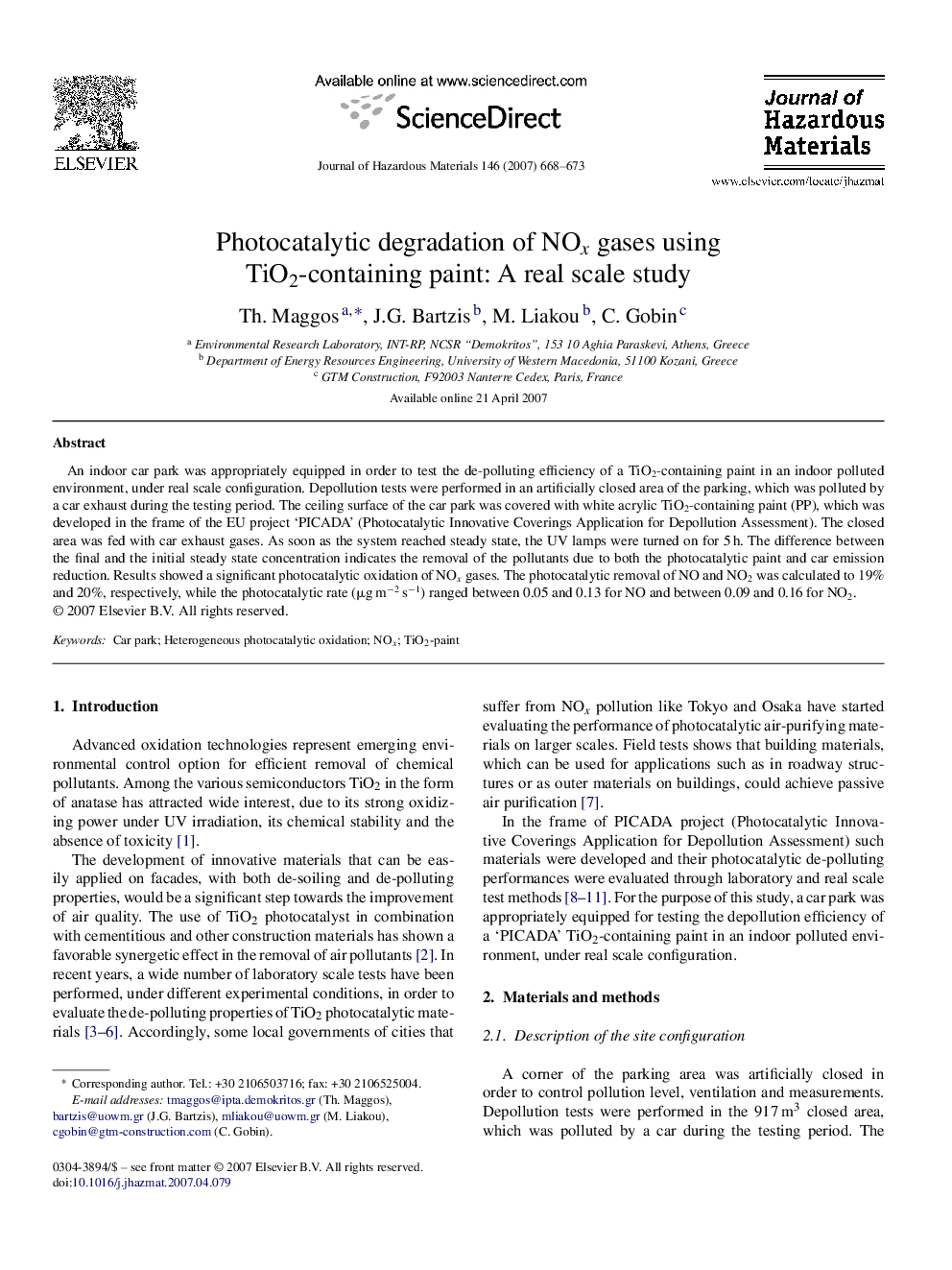| Article ID | Journal | Published Year | Pages | File Type |
|---|---|---|---|---|
| 584648 | Journal of Hazardous Materials | 2007 | 6 Pages |
Abstract
An indoor car park was appropriately equipped in order to test the de-polluting efficiency of a TiO2-containing paint in an indoor polluted environment, under real scale configuration. Depollution tests were performed in an artificially closed area of the parking, which was polluted by a car exhaust during the testing period. The ceiling surface of the car park was covered with white acrylic TiO2-containing paint (PP), which was developed in the frame of the EU project 'PICADA' (Photocatalytic Innovative Coverings Application for Depollution Assessment). The closed area was fed with car exhaust gases. As soon as the system reached steady state, the UV lamps were turned on for 5 h. The difference between the final and the initial steady state concentration indicates the removal of the pollutants due to both the photocatalytic paint and car emission reduction. Results showed a significant photocatalytic oxidation of NOx gases. The photocatalytic removal of NO and NO2 was calculated to 19% and 20%, respectively, while the photocatalytic rate (μg mâ2 sâ1) ranged between 0.05 and 0.13 for NO and between 0.09 and 0.16 for NO2.
Related Topics
Physical Sciences and Engineering
Chemical Engineering
Chemical Health and Safety
Authors
Th. Maggos, J.G. Bartzis, M. Liakou, C. Gobin,
